The Anatolian Pyrenees is a crossbreed dog resulting from the combination of the Anatolian Shepherd and the Great Pyrenees. This hybrid breed inherits characteristics from both parent breeds, resulting in a large and powerful dog with a strong and protective instinct. The Anatolian Pyrenees is recognized for their loyalty to its family and ability to be an effective guardian. While this breed makes an excellent choice for those looking for a working dog, they can also make great companion animals. Both breeds are known for their gentleness with children and laid-back temperament. However, both breeds are also very independent and require early training and socialization.
In terms of physical characteristics, the Anatolian Pyrenees mix typically has a large and sturdy build. They also have a thick double coat that may come in various colors and lengths, often featuring a mix of white and shades of tan or cream. They may sometimes look more closely related to one parent breed than the other.
When considering an Anatolian Pyrenees, it’s advisable to prioritize adopting from rescue organizations or shelters to provide a loving home to a dog in need. However, if you decide to purchase an Anatolian Pyrenees puppy, it’s crucial to choose a reputable breeder. Conduct thorough research to ensure that the breeder follows ethical practices and prioritizes the well-being of their dogs. Reputable Anatolian Pyrenees breeders prioritize the health and temperament of their dogs, conduct necessary health screenings, and provide a nurturing environment for the puppies. This active approach ensures that you bring home a healthy and happy pup while discouraging unethical breeding practices.
Quick Facts
- Origin: United States
- Size: Extra-large, 23-29 inches tall, weighing 100-150 pounds
- Breed Group: Working
- Lifespan: 10-13 years
- Coat: Thick double coat that varies in color, but is usually mostly white, with brown or black markings, or solid white, or black and tan
- Temperament: Loyal, protective, affectionate, and independent
- Exercise needs: High
- Training: Moderate to difficult to train, as they can be stubborn and independent
- Grooming: Regular brushing, especially during shedding season
- Health: Generally healthy, but may be prone to certain health conditions, such as hip dysplasia, elbow dysplasia, and eye problems
- “Friends” alum Jennifer Aniston adopted a Great Pyrenees mix named Chesterfield. The adorable pup stole her heart, as well as the hearts of millions of fans.
Anatolian Pyrenees Pictures
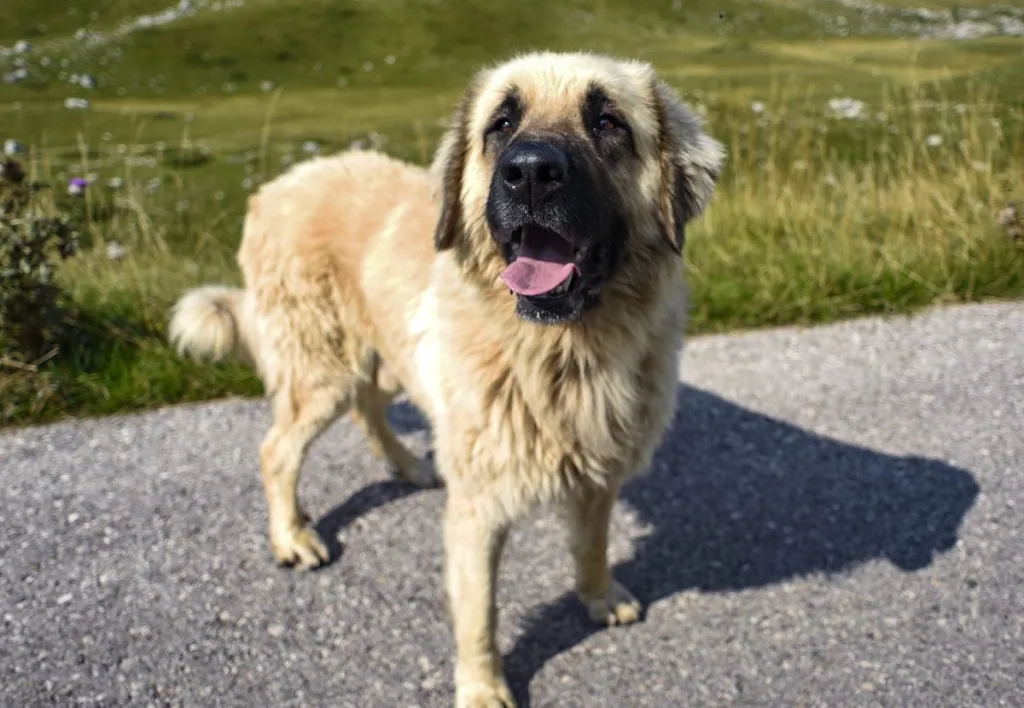
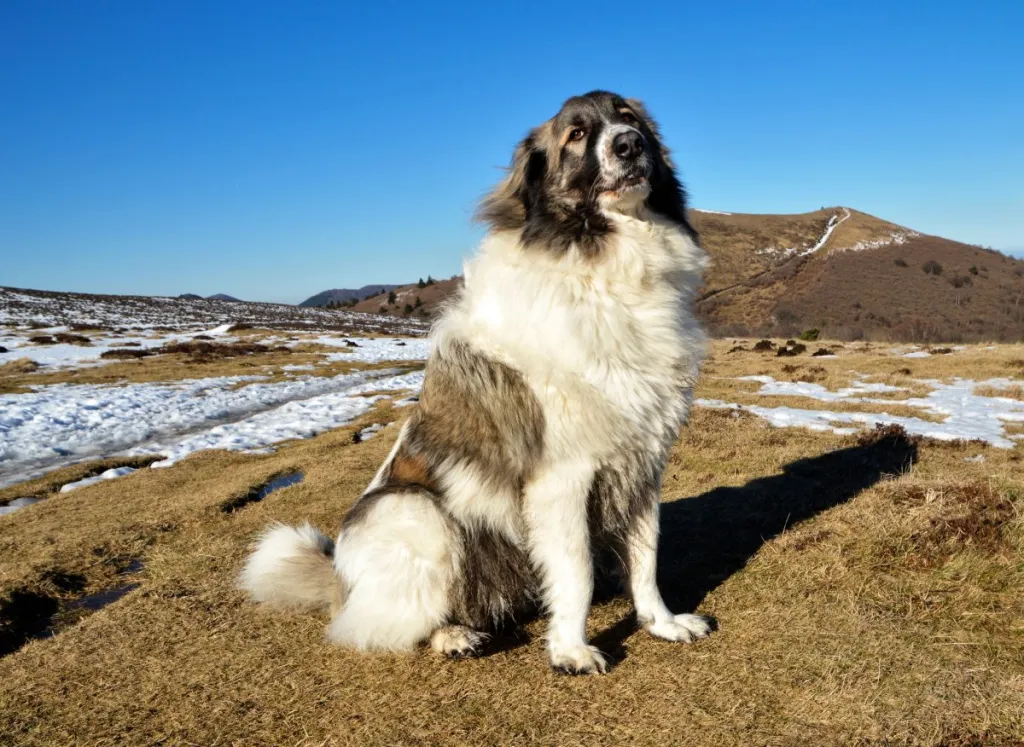
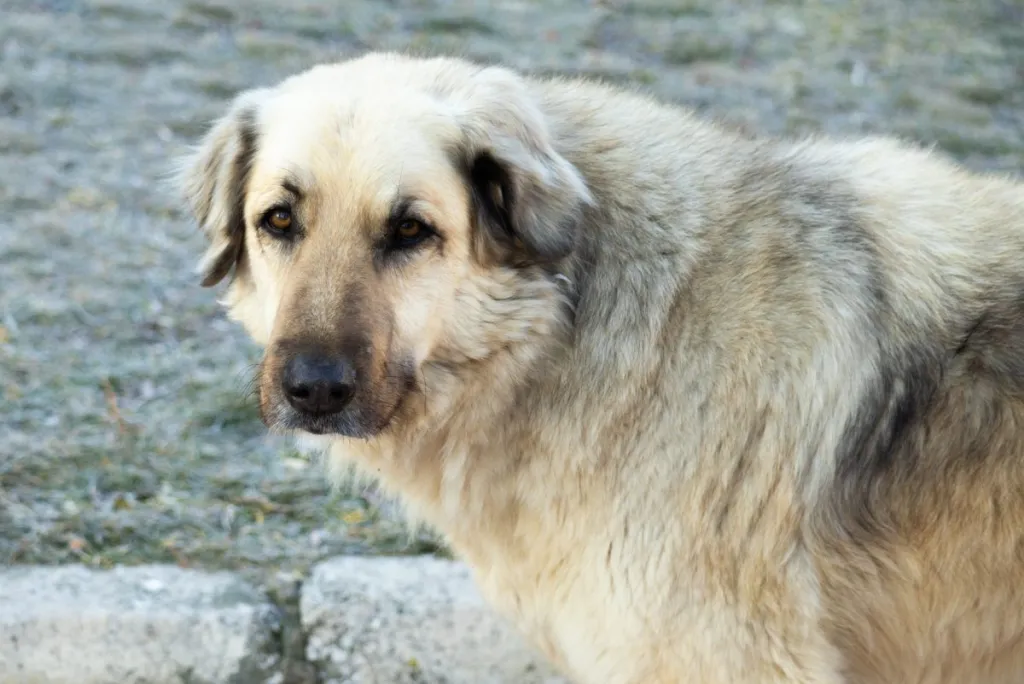
Adaptability
-
Adapts Well To Apartment Living
Looking for the best dog for your apartment? Contrary to popular belief, the suitability of dogs who adapt well to apartment living goes beyond its size. Apartment dwellers have a myriad of dog breeds to choose from as potential companions, with various factors to consider. Some large breeds can adapt well to apartment living and have lower activity levels. Others may require more space and possess higher energy levels. On the other hand, certain small dog breeds with abundant energy can still find contentment with indoor playtime or brisk walks.
However, when selecting a dog that adapts well to apartments, it is essential to prioritize your neighbors. Opting for a pet that doesn’t excessively bark and behaves politely when encountering others in shared spaces is crucial. In apartment settings, it’s worth noting that numerous small dogs may exhibit a propensity for high energy and frequent barking. This can make them less suitable for apartment living. Rather than size alone, you’ll want to think about breeds who are quiet, low-energy, and sociable towards other residents.
Training tips for apartment dogs
Regardless of your pup’s inherent suitability to apartment living, you will want to invest in additional training to help them be their best selves. Training dogs not inherently suited to apartment living requires extra patience and consistency. Start by establishing clear boundaries and rules within your apartment to create a structured routine for your dog. Focus on basic obedience commands such as “sit”, “stay”, “come”, and “leave it”. Barking-related training commands including “hush” or “quiet” are also crucial. This training is essential for managing your dog’s behavior both indoors and outdoors.
Since space may be limited, prioritize leash training to ensure your dog walks calmly and obediently, especially in communal areas. Crate training can also help your dog feel safe and secure while you’re away from your apartment. This may help your pup avoid anxiety, which could lead to barking habits.
-
Good For Novice Dog Owners
When considering adding a dog to your home, it’s important to acknowledge that some dog breeds may present less of a challenge in terms of training and temperament. These dogs tend to be more adaptable, responsive to training, and resilient, readily overcoming any training hiccups or inconsistencies. As one might expect, these breeds may be good for novice dog owners.
Conversely, certain dogs may pose greater difficulties, particularly for first-time owners. Factors such as heightened sensitivity, independence, energy levels, or assertiveness can contribute to a more demanding ownership experience. Novice dog owners should assess their level of experience and comfort when selecting a new pet, ensuring compatibility with their lifestyle and capabilities for a mutually rewarding relationship.
Tips for first-time or novice dog owners
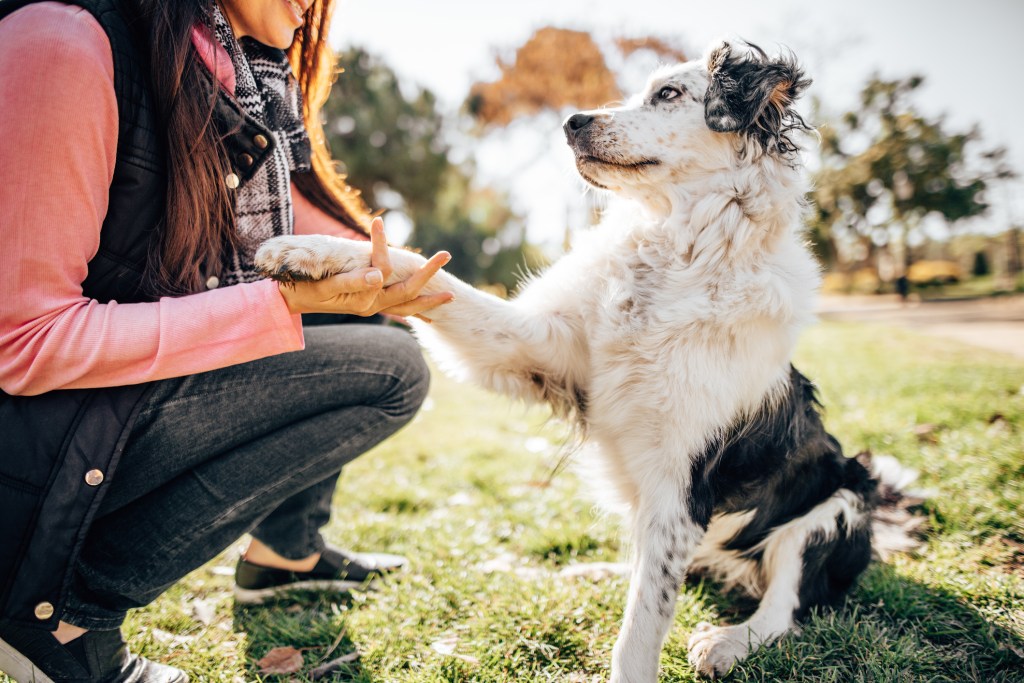
(Photo Credit: franckreporter | Getty Images) For first-time or novice dog owners, pet ownership can be both exciting and daunting. As a bit of advice, research breeds thoroughly before bringing a dog home. Each breed has their unique traits, energy levels, and care requirements. Consider factors such as size, exercise needs, grooming demands, and temperament to find a breed that aligns with your lifestyle and preferences.
Prioritizing training and socialization at an early age is essential. You may want a breed who is more easy to train or perhaps possesses a lower energy level. Establishing clear boundaries and expectations early on lays the foundation for a well-behaved and well-adjusted dog. Basic obedience training such as teaching commands like sit, stay, and come, is crucial for effective communication and building a strong bond with your new best friend. Additionally, exposing your dog to various environments, people, and other animals helps prevent behavioral issues and promotes confidence and adaptability. Consistent care, patience, and love are key ingredients for a fulfilling and rewarding relationship with your dog.
-
Sensitivity Level
Sensitivity levels in dogs vary widely among breeds and individuals. This trait can be determined by how a dog responds to their environment. While some dogs remain unfazed by stern reprimands or surrounding stimuli, others are more sensitive. Even the slightest disapproving glance or the sound of a passing car can affect a sensitive dog. Dogs with a low sensitivity level, also known as “easygoing,” “tolerant,” “resilient,” or “thick-skinned,” are better equipped to handle a bustling household, assertive owners, and unpredictable routines. If you have young children, frequently host social gatherings, engage in noisy activities like playing in a band, or live a busy, unpredictable life, a low sensitivity level dog may be the ideal choice for you.
Highly sensitive dogs are wired differently, with research indicating that their brains process sensory input more deeply. Evolutionarily speaking, scientists theorize high sensitivity levels could aid in survival by functioning as an early warning system, alerting the pack imminent danger. Sensitivity in dogs also includes how they interact with humans and other animals. Some dogs are naturally more sensitive, quickly picking up on subtle cues and changes in their surroundings. Others are more resilient and are able to brush off minor disturbances. Factors such as genetics, early socialization, and life experiences can all contribute to a dog’s sensitivity levels. Highly sensitive dogs may react strongly to loud noises, sudden movements, or changes in routine, while less sensitive dogs may remain calm and composed in similar situations. Being “highly-sensitive” doesn’t always only mean “highly anxious”. Highly-sensitive dogs may also be more empathetic, more affectionate, or serve as better guardians.
Tips for highly-sensitive dogs
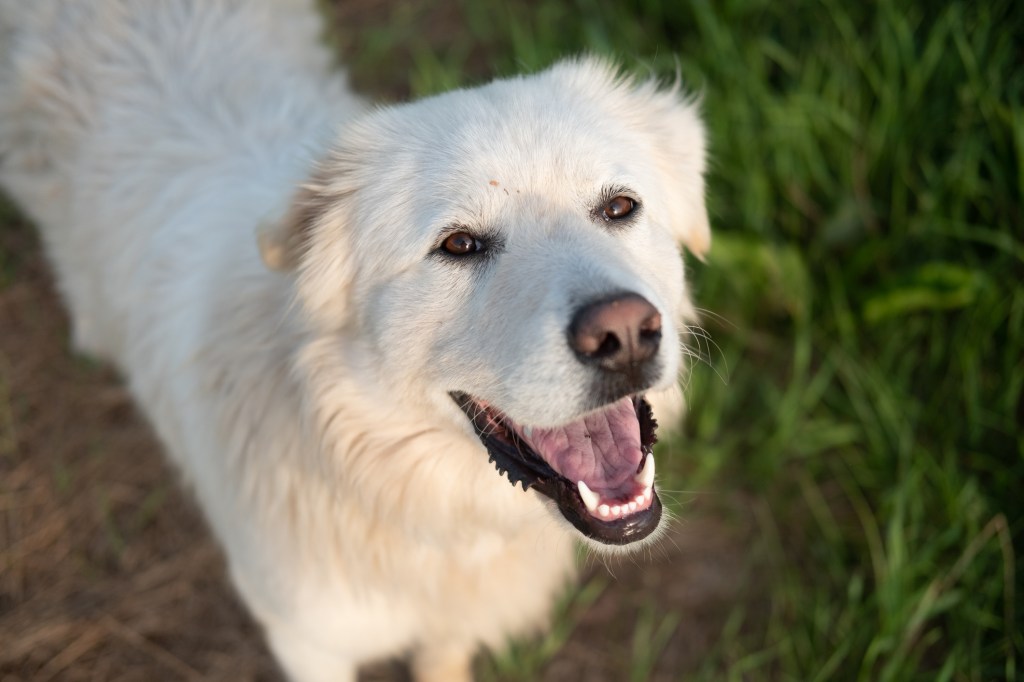
(Photo Credit: Caet Moir | Getty Images) Helping highly sensitive dogs involves creating a calm environment, establishing predictable routines, and using positive reinforcement training techniques. Gradually expose them to new experiences while providing mental stimulation and regular exercise to reduce anxiety and boredom. Monitor their diet and health, offering emotional support and reassurance to help them feel secure and valued.
-
Tolerates Being Alone
Some breeds bond very closely with their family and are more prone to worry or even panic when left alone by their owner. An anxious dog can be very destructive–barking, whining, chewing, and otherwise causing mayhem. These breeds do best when a family member is home during the day or if you can take the dog to work. On the other hand, some breeds are instinctually more independent and easily tolerates being alone.
It’s essential to remember that individual dogs’ tolerance for being alone can vary greatly, depending on factors such as age, temperament, and training. Providing appropriate mental stimulation, toys, and a comfortable environment can help alleviate any potential distress when leaving these breeds alone.
Tips for leaving your dog home alone
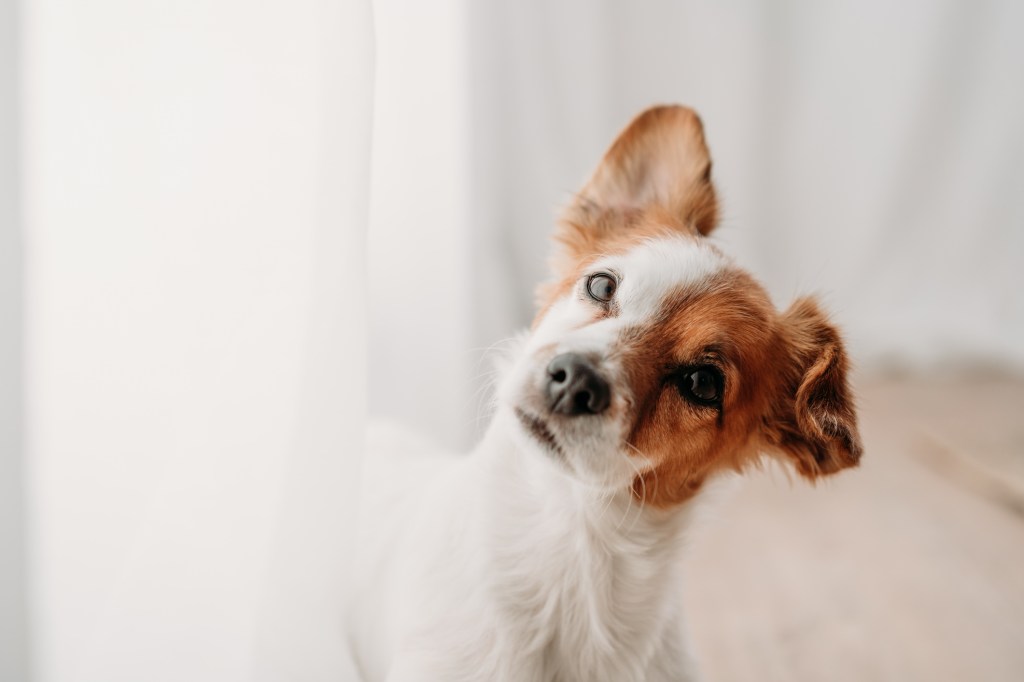
(Photo Credit: Eva Blanco | Getty Images) When leaving your dog home alone, it’s essential to create a calm and comfortable environment for them. Even if your dog tolerates being alone, always make sure they have access to their favorite toys, bedding, and water. Consider leaving on soothing background noise, such as calming music or a white noise machine, to help drown out any outside sounds and provide a sense of security.
Before leaving, give your pup an energetic play session or walk to tire them out and alleviate any pent-up energy. Avoid making a big fuss when you leave or return to prevent reinforcing separation anxiety. Additionally, consider providing a special treat or puzzle toy to keep your dog occupied while you’re away, helping to distract them and make their alone time more enjoyable. You may also want to gradually increase the duration of your absences over time.
-
Tolerates Cold Weather
Several dog breeds are naturally equipped to tolerate cold weather and climates, thanks to their thick coats, sturdy builds, and unique adaptations. Some breeds from snowy climates and mountainous regions may immediately come to mind, like the Siberian Husky, Alaskan Malamute, and Bernese Mountain Dog. Renowned for their cold tolerance and ability to excel in snowy environments, these cold-weather breeds not only tolerate freezing temperatures but may be happiest in the chill. Thanks to dense double coats that provide excellent insulation against the cold, they have no trouble adapting when the temperatures drop.
Additionally, these dogs may have a higher body fat percentage have a built-in layer of insulation that helps retain body heat in cold weather. Physical attributes also play a role in cold tolerance, enabling dogs to navigate snowy or icy terrain with ease. Certain breeds may have specialized adaptations, such as furry feet for traction on slippery surfaces or water-resistant coats for protection against moisture and wind chill. Moreover, a dog’s natural instincts, such as seeking shelter or burrowing in the snow for warmth, can further enhance their ability to tolerate cold weather.
Safety tips for cold-weather breeds
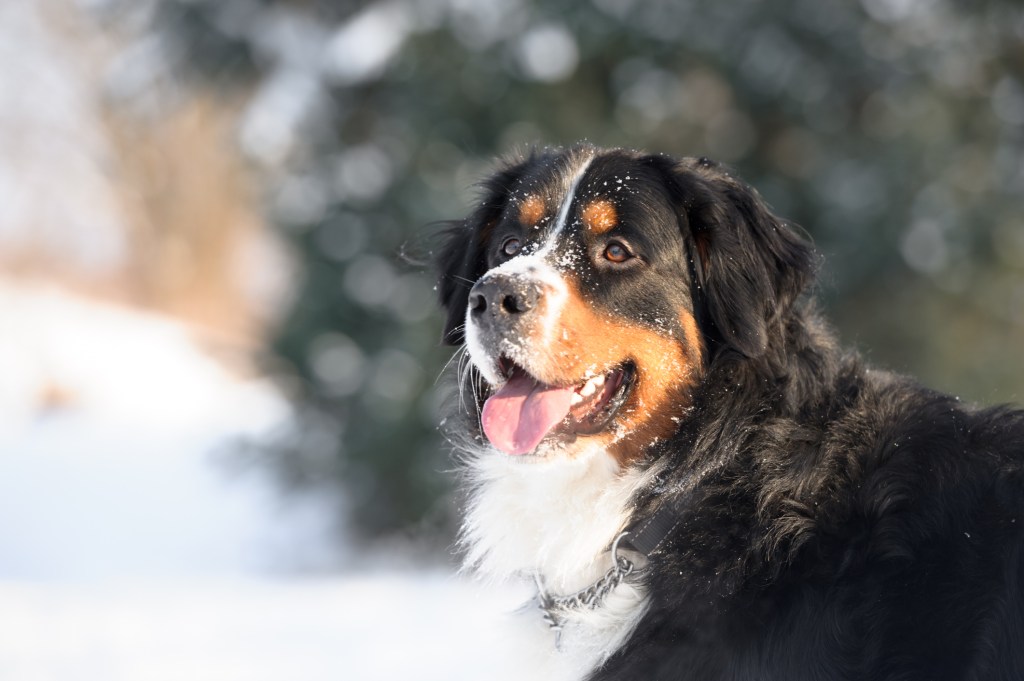
(Photo Credit: cunfek | Getty Images) Although come breeds may easily tolerate cold weather, it’s important to research temperature guidelines for safety. For cold-weather breeds such as the Siberian Husky, Alaskan Malamute, and Samoyed, provide adequate protection and care during cold weather. Ensure they have access to shelter from the elements, such as a well-insulated dog house or a warm indoor space, particularly during extreme weather conditions. Keep outdoor excursions brief and monitor your dog closely for signs of discomfort or frostbite, paying attention to their ears, paw pads, and tail. Consider using protective paw wax or booties to shield their feet from ice and salt. Additionally, adjust their diet to provide extra calories during colder months to support their energy needs.
-
Tolerates Hot Weather
Unlike cold-weather breeds and brachycephalic dogs, certain dog breeds are well-adapted to warmer climate and tolerate hot weather with relative ease. Breeds such as the Chihuahua, Dalmatian, and Basenji have short coats and lean body structures that facilitate heat dissipation, allowing them to stay comfortable in warmer weather. Their minimal fur reduces the risk of overheating, and their efficient panting mechanisms help regulate their body temperature effectively. These breeds often enjoy basking in the sun and participating in outdoor activities even during hot days, although owners should still ensure they have access to shade and water to prevent dehydration.
Moreover, some breeds have evolved in regions with hot climates, equipping them with natural adaptations to thrive in warm weather conditions. These breeds have developed unique features such as hairless or short coats, as well as physiological traits that aid in heat tolerance. Their ability to cope with high temperatures makes them suitable companions for owners living in warm climates, although proper care and attention to hydration and sun protection are still essential to ensure their well-being during hot weather.
Safety tips for hot weather
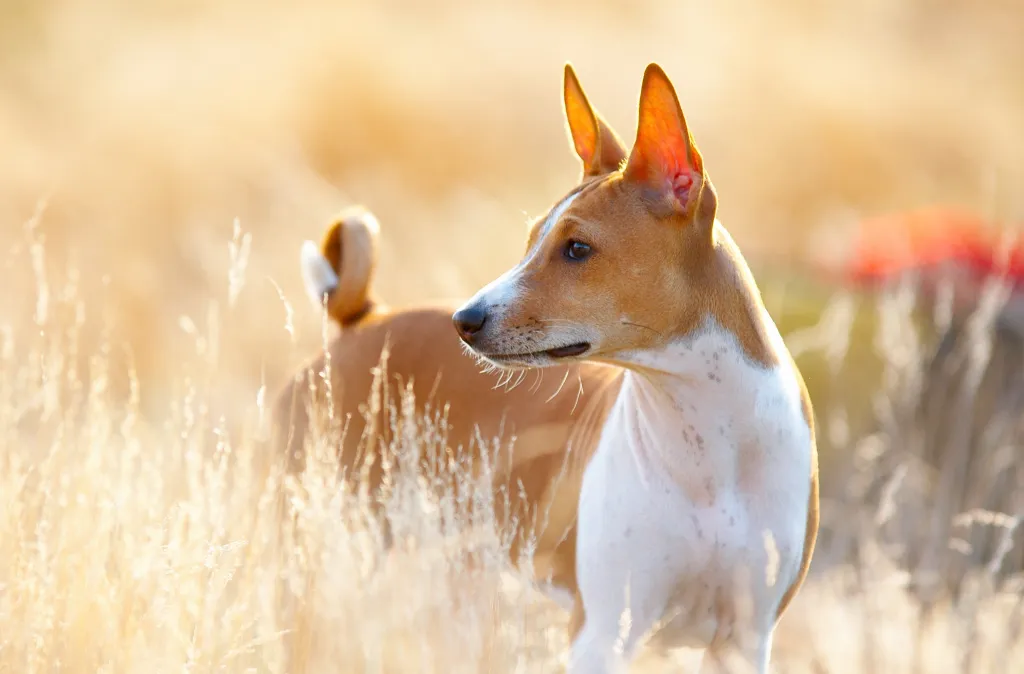
(Photo Credit: Madjuszka | Getty Images) Even if your dog tolerates hot weather, it’s still important to prioritize safety. You can check out guidelines on assessing if the weather is too hot for your dog. Ensure your dog always has access to fresh water, provide shaded areas in your yard or outdoor space, and schedule outdoor activities during cooler times of the day to prevent overheating. Never leave your dog in a parked car, monitor for signs of heat exhaustion, and protect their paws from hot pavement. Consider using pet-safe sunscreen on exposed skin areas and seek veterinary assistance if symptoms persist.
All-around friendliness
-
Best Family Dogs
When it comes to unconditional love and unwavering loyalty, few animals can rival the affectionate nature of dogs. These remarkable creatures have earned their reputation as man’s best friend, and it’s no wonder! Many breeds are particularly renowned for their love and devotion to their families. With their warm hearts and wagging tails, affectionate family dogs enrich the lives of their owners in countless ways.
While we like to think that all dogs are creatures of love, some breeds may be more outwardly affectionate than others. Some of this is due to temperament, breed group, and purpose. For example, dogs first bred for working or guarding independently of their human companions may show less affection than dogs specifically bred to be companion animals. Of course, this is no indication of the bond between a human and pup, but rather related to temperament and breed origin.
Affection may be demonstrated through a myriad of heartwarming behaviors. This may including tail-wagging greetings, cuddles on the couch, and an ever-present eagerness to be by their family’s side. This devotion extends to both adults and children, making dogs wonderful additions to family households. The warmth of a dog’s affection not only provides emotional support but also creates an environment of joy and connection within the family, fostering a sense of togetherness.
How To Know If A Dog Is Good With Families
The affectionate nature of family dogs extends beyond play and cuddles. Dogs have a remarkable ability to sense their owner’s emotions, offering comfort and support during difficult times. Whether it’s a wagging tail after a long day at work or a sympathetic nuzzle during moments of sadness, they prove time and again that they are attuned to their family’s needs.
It is important to note that not all dogs of the same breed will be equally affectionate. Some dogs may be more independent or aloof, while others may be more clingy or demanding of attention. The best way to find out how affectionate a dog is is to meet them in person and interact with them.
-
Kid-Friendly
If you’re looking for a pup to join your household, you may first want to consider the most kid-friendly dog breeds. A gentle nature, patience, and the sturdiness to handle the heavy-handed pets and hugs children can dish out can be some of the most kid-friendly dog-defining traits. Of course, a pup with a blasé attitude toward running and screaming children would be a bonus.
At first glance, you may be surprised by the most kid-friendly dogs. Fierce-looking Boxers are considered good with children, as are American Staffordshire Terriers, an affectionate Pit Bull breed. Small, delicate, and potentially snappy dogs such as Chihuahuas aren’t always so family-friendly.
It’s important to note all dogs are individuals. Our ratings are generalizations, and they’re not a guarantee of how any breed or individual dog will behave. Dogs from any breed can be good with children based on their past experiences. Additionally, training plays a big role in how dogs will get along with kids. No matter what the breed or breed type, all dogs have strong jaws, pointy teeth, and may bite under stressful circumstances or mishandling. Young children and dogs of any breed should always be supervised by an adult and never left alone without supervision.
How to Know If a Dog is Kid-Friendly
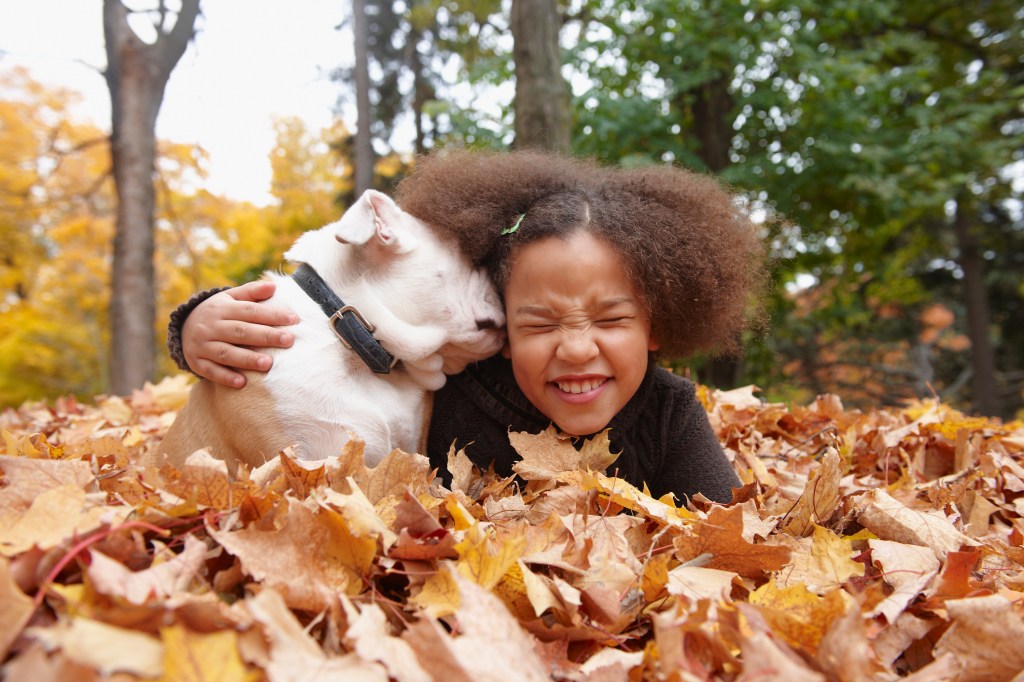
(Photo Credit: LWA/Dann Tardif | Getty Images) Determining if a dog is kid-friendly involves assessing various aspects of their temperament, behavior, and breed characteristics. A kid-friendly dog should display a gentle and calm demeanor, showing an ability to handle the unpredictable behaviors and noises associated with children. Additionally, behavioral signals like wagging tails and a relaxed body language often indicates a positive interaction with kids.
Breed tendencies also play a role in gauging kid-friendliness. Some breeds are inherently more predisposed to be good with children. It’s essential to consider the dog’s personality, socialization history, and any signs of anxiety or discomfort. A well-socialized dog that has positive experiences with children is more likely to be kid-friendly, regardless of their breed. Conducting meet-and-greet sessions under controlled circumstances and observing the dog’s reactions to children’s actions can provide valuable insights into their suitability for family life.
-
Dog Friendly
Friendliness toward dogs and friendliness toward humans are two completely different things. Some dogs may intimidate other dogs, even if they’re love-bugs with people; others are naturally more dog friend and would rather play than fight. It’s important to note that breed isn’t the only factor when it comes to how dog-friendly your pup will be. Sure, some dogs breeds first bred for working independently may not immediately gravitate towards other dogs, but early socialization plays a lot more into how dogs will interact than their origin. Dogs who lived with their littermates and mother until at least six to eight weeks of age or who spent lots of time playing with other dogs during puppyhood are more likely to have good canine social skills.
Still, some dog-friendly breeds are more pack-oriented and naturally thrive with other dogs. Dogs with this trait typically exhibit an innate ability to get along well with other pups. Dogs with this trait may be more eager to greet new dogs, display more social behavior at places like dog parks, or more confidently allow intimate sniffs from their canine acquaintances. This quality extends beyond mere tolerance and often manifests as a genuine enjoyment of the company of fellow canines, making these dogs ideal companions for those looking to build a multi-dog household. Additionally, they’ll pair well with pet parents hoping to take their pooch on social adventures, such as going to dog park or hanging out on dog-friendly patios.
Raising a dog-friendly dog
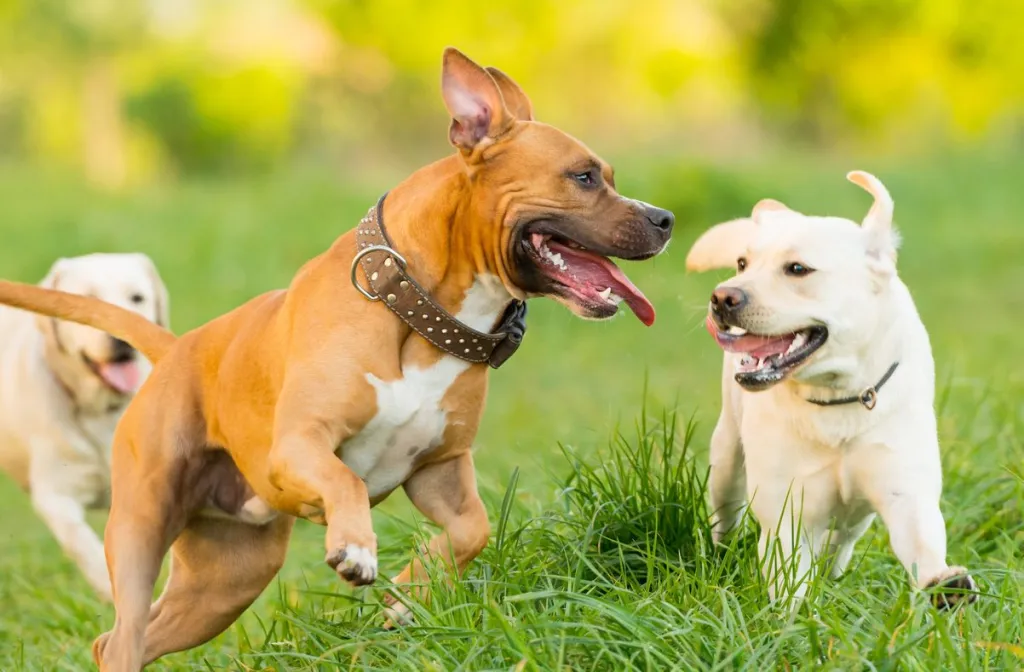
(Photo Credit: Stefan Cristian Cioata | Getty Images) While some dog breeds are more naturally inclined to make friends with other dogs, you may choose a puppy or adult dog that needs a little help. It’s may be common knowledge that there is a small window during a puppy’s early development when they are the most adaptable in terms of how they’ll interact with other dogs. You may, however, bring home an adult dog or a rescue and not get the opportunity. Not to fear! There are still many ways to help your pooch become dog-friendly.
Socialization is always the best way to ensure your dog becomes their most friendly self. You can help by exposing your pooch to as many sights, sounds, and environments as possible. Set up doggy playdates, enroll in dog training classes, or visit the dog park. Of course, be sure to do your research on dog training methods to ensure your dog will listen to you in social settings. Confidence is key!
-
Friendly Toward Strangers
Stranger-friendly dogs will greet guests with wagging tails and nuzzles; others are shy, indifferent, or even reserved. However, no matter what the breed, a dog who was socialized and exposed to lots of different types, ages, sizes, and shapes of people as a puppy will respond better to strangers as an adult. Remember that even friendly dogs should stay on a good, strong leash in public.
However, it’s worth noting that certain breeds might initially appear more reserved or aloof when encountering new people. Some individuals appreciate this quality, as not everyone seeks a highly sociable canine companion. There is a preference for the calm and composed personalities exhibited by specific breeds. It’s essential to recognize that not all breeds necessarily need to be inherently friendly with strangers; however, it is crucial that your pup is not aggressive or reactive in such situations.
Raising a stranger-friendly dog
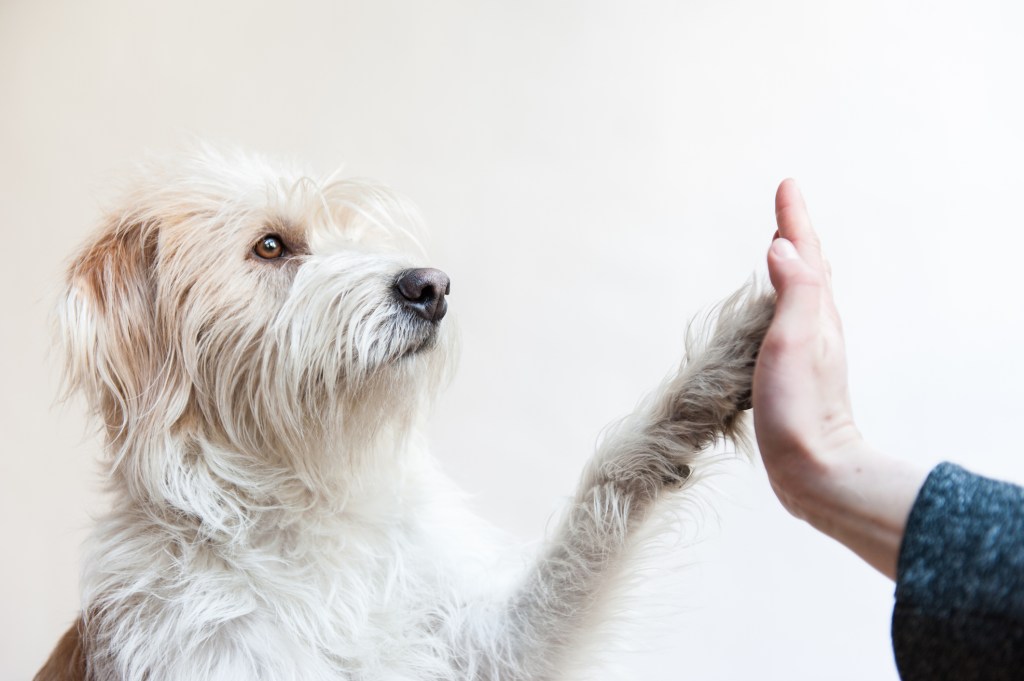
(Photo Credit: Lucy Lambriex | Getty Images) While some dog breeds are more naturally inclined to make friends with strangers, you may choose a puppy or adult dog that needs a little help. It’s may be common knowledge that there is a small window during a puppy’s early development when they are the most adaptable in terms of how they’ll interact with humans. You may, however, bring home an adult dog or a rescue and not get the opportunity. Not to fear! There are still many ways to help your pooch become stranger-friendly.
Socialization is always the best way to ensure your dog becomes their most friendly self. You can help by exposing your pooch to as many sights, sounds, and environments as possible. Set up doggy playdates, enroll in dog training classes, or visit the dog park. Of course, be sure to do your research on dog training methods to ensure your dog will listen to you in social settings. Confidence is key!
Health And Grooming Needs
-
Shedding
When considering adding a pup into your home, you may want to consider the amount of shedding your furry companion will experience. Regardless of the dog breed, you will want to be prepared for at least some amount of pet hair on your clothing and around your house. Of course, this amount can vary greatly as shedding tendencies differ significantly among breeds. Some dogs shed continuously, especially dog breeds with heavy double-coats or long fur. Others undergo seasonal “blowouts” and some hardly shed at all.
Having a set of grooming tools at your disposal is essential for tending to your dog’s coat. Deshedding tools are excellent for eliminating excess hair that can become trapped in your dog’s fur. There are also brushes designed to gently remove dead hair without causing discomfort to your dog’s skin. Grooming gloves and bathing brushes can aid in loosening dead hair during shampooing, making it easier to brush away. Clippers and a detangling spray effectively tackle matted fur. Additionally, home tools for managing pet hair on fabric and furniture can make a big difference. Pet tape rollers, fur brooms, and specialized vacuums can eliminate pet hair from carpet, clothing, and even furniture.
If you’re someone who values a spotless environment, you might want to opt for a low-shedding breed. Otherwise, equip yourself with the right tools to fight the fur. Concerns about shedding shouldn’t prevent you from relishing your time at home with your dog. Establishing a consistent grooming regimen can significantly minimize the presence of loose hair in your living space and on your clothing. For additional guidance on managing dog shedding, explore our recommendations for addressing excessive shedding and designing your home with your pet (and their shedding tendencies) in mind.
Related:
-
Drooling Potential
Often referred to as “heavy droolers,” some slobbery dog breeds are known for their drooling potential. This trait is more prevalent in certain breeds with loose, jowly skin. A few breeds that may come to mind when thinking about dog drool are Saint Bernards, Bloodhounds, and Mastiffs. Drooling is a natural behavior influenced by factors like genetics, breed characteristics, and individual anatomy. Even among breeds with a higher drooling potential, some dogs may drool very little while others may drool a lot.
While some dogs may only drool more during specific activities like eating or in anticipation of food, others may be consistent heavy droolers due to their inherent physiological makeup. Living with a dog that drools requires a degree of acceptance and proactive management. Pet owners of drooling breeds often keep absorbent towels or bandanas on hand to wipe away excess saliva. This may be particularly necessary after meals or playtime. Regular dental care can also contribute to reduce excessive drooling by addressing potential oral health issues. Despite the occasional mess, many pet owners of drooling dogs appreciate their unique charm.
Drool-prone dogs may drape ropes of slobber on your arm and leave big, wet spots on your clothes when they come over to say hello. If you’ve got a laid-back attitude toward slobber, fine; but if you’re not a fan of the extra slime, you may want to choose a dog who rates low in the drool department.
Dealing with drooling
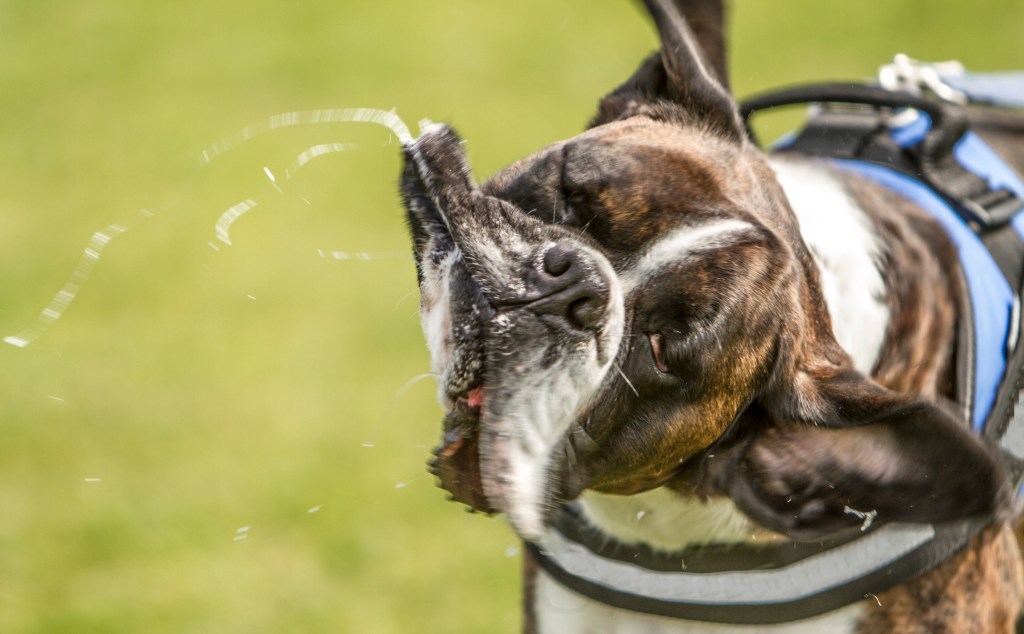
(Photo Credit: Sonya Kate Wilson | Getty Images) Owners with slobbery dog breeds should establish a baseline for their dog’s normal drooling levels. There may be instances where excessive drooling indicates an underlying issue rather than typical breed behavior. Excessive drooling in dogs can serve as an indicator of potential underlying issues. Various factors, such as stress, high temperatures, dental problems, allergic reactions, or nausea, may contribute to increased drooling. If your dog usually isn’t very slobbery or if additional concerning symptoms accompany sudden and pronounced drooling, it is advisable to consult with a veterinarian. Keeping track of what is typical for your dog allows you to quickly identify deviations from the norm and address potential health concerns or discomfort.
-
Easy To Groom
Some breeds are brush-and-go dogs; others require regular bathing, clipping, and other grooming just to stay clean and healthy. Easy-to-groom dogs are a smart choice for pet owners looking for a low-maintenance companion. Breeds with short coats or those that shed minimally often fall into the category of easy-to-groom dogs. Of course there are exceptions to this statement. For example, allergy-friendly, low-shedding Poodles or Poodle Mixes like the Labradoodle or Bernedoodle require frequent grooming. Low-maintenance dog breeds require less frequent brushing sessions. These pups may be more convenient for individuals with busy schedules or those looking for a hassle-free pet care routine.
Owners of low-maintenance dogs also enjoy the benefit of reduced grooming-related expenses. Because these breeds typically don’t require professional services, these low-maintenance breeds end up being more budget-friendly. Common examples of easy-to-groom breeds include Beagles, Labrador Retrievers, and Dachshunds. While regular grooming remains essential for all dogs, the easy-to-groom breeds offer a practical option for pet parents seeking a dog without the added demands of intricate care routines. Consider whether you have the time and patience for a dog who needs a lot of grooming. Alternatively, you may want to consider the budget required to pay someone else to do it.
Some breeds have unique grooming needs
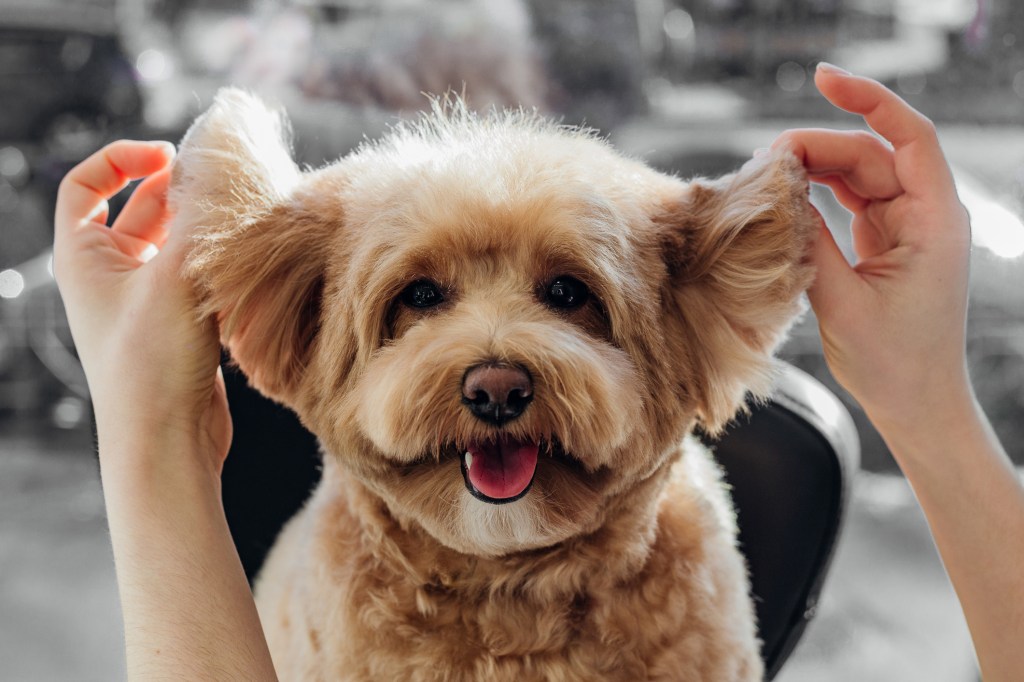
(Photo Credit: Iuliia Bondar | Getty Images) Beyond the usual brushing, clipping, and trimming needs, some breeds require additional grooming for their unique needs. Breeds such as Pugs and Shar-Peis have loose skin and wrinkles that require extra vigilance during bathing.
First, to prevent grime and even bacteria from becoming a problem, clean between the folds of their skin with damp cotton and then dry well. Keeping these areas dry is also important after a bath or a walk in the rain. Long, droopy-eared pups like the Basset Hound or Cocker Spaniel must be checked weekly for buildups of wax and dirt. A cotton wad with a little water or mineral oil can help keep the ears clean and dry. Drops specifically designed to clean and dry the canal should also be applied for these ear infection-prone dogs. Hair that grows around the canal entrance should be kept trimmed. You can check with a professional groomer or veterinarian for instructions on how to properly and safely do this. Special tools may be available for this unique task.
-
General Health
While most dogs experience good general health, some breeds may be prone to specific health issues. Conditions like hip dysplasia, cancer, or heart conditions can result from poor breeding practices or genetic dispositions. However, it’s important to note that not every dog of a particular breed will necessarily develop these diseases. Rather, they only face an elevated risk compared to other breeds.
When considering adding a dog or puppy to your home, it’s advisable to research the prevalent genetic illnesses associated with the breed you’re interested in adopting. Additionally, it can be beneficial to inquire whether your chosen shelter or rescue organization possesses information regarding the physical health of the potential pup’s parents and other relatives. This knowledge can aid in understanding potential health risks and ensuring the best possible start for your new furry family member.
Recommended Screenings for General Health
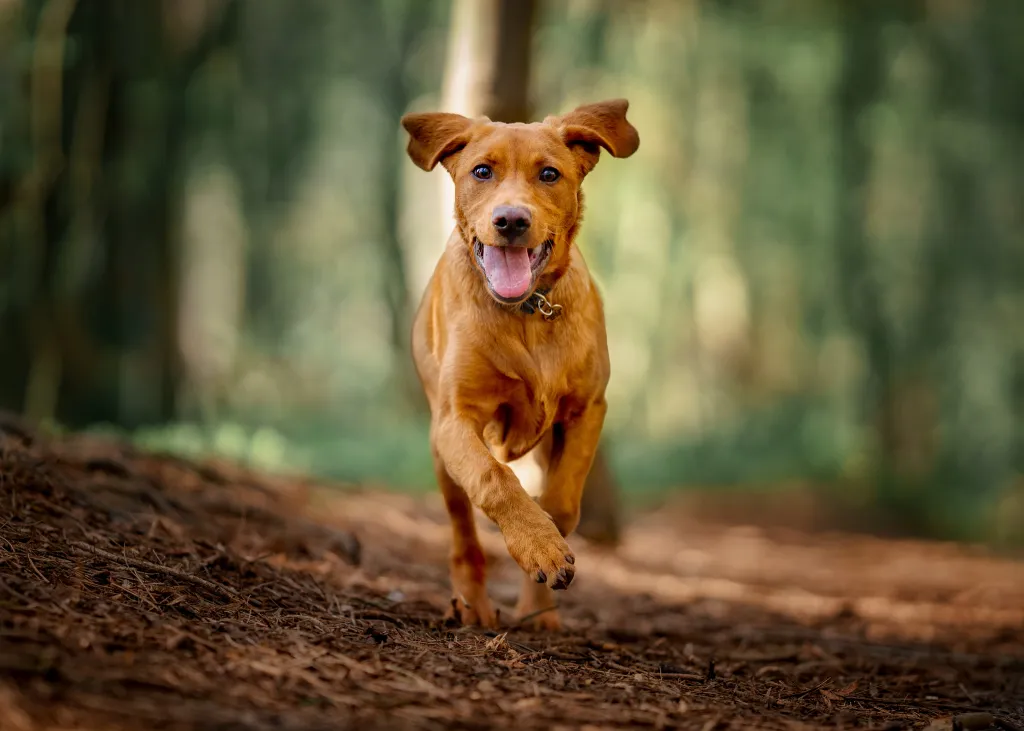
(Photo Credit: Mike Linnane / 500px | Getty Images) The CHIC (Canine Health Information Center), a program created by the Orthopedic Foundation for Animals (OFA), provides a centralized database for canine health information, particularly focusing on orthopedic and genetic conditions. Despite robust general health, they recommend several health screenings for breeds due to potential predispositions to certain conditions. After screening, the CHIC assigns a number to a dog’s test results. It doesn’t indicate normal results, just that all necessary tests were done and results made available. A CHIC report accompanies the number, detailing the tests, the dog’s age during testing, and the results.
The CHIC program adjusts its requirements based on evolving breed health concerns. Existing CHIC numbers aren’t affected if requirements change. This number is also displayed on AKC documents, including Certified Pedigrees, Registration Applications, and Registration Certificates. This record signifies to potential puppy parents and breed enthusiasts that recommended tests have been completed. Although the CHIC database only includes purebred dogs, you can look up a hybrid breed’s parent breeds for potential health considerations.
-
Potential For Weight Gain
Certain dog breeds have a predisposition towards hearty appetites. As a result, they may also be prone to weight gain, similar to humans. Just like in people, obesity in dogs can lead to various health issues. If you opt for a breed prone to packing on pounds, it’s essential to implement strategies to manage their weight effectively. This includes limiting treats, ensuring they receive sufficient exercise, and regulating their daily food intake by serving measured meals instead of leaving food accessible all day.
Consulting with your veterinarian about your dog’s diet is crucial. They can provide valuable insights and recommendations tailored to your pet’s specific needs to help maintain a healthy weight. Weight gain not only poses direct health risks but can also exacerbate existing conditions such as arthritis, leading to further complications if left unchecked. Thus, proactive management of your dog’s weight is integral to their overall well-being and longevity.
Ways to manage weight gain in dogs
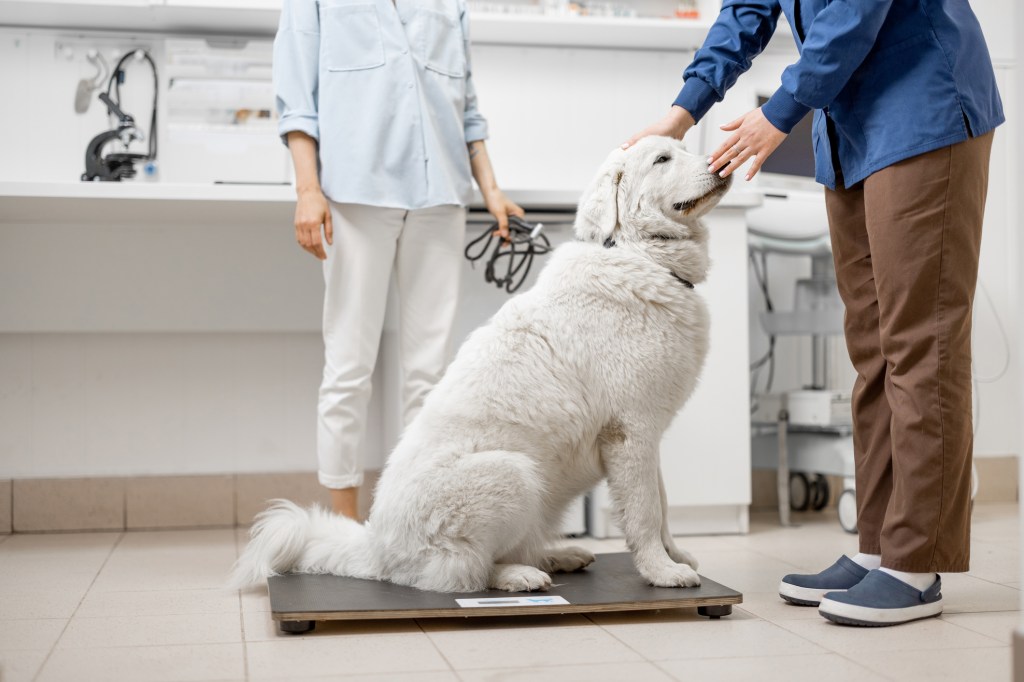
(Photo Credit: RossHelen | Getty Images) To help your dog manage weight gain, start by consulting with your veterinarian to develop a safe and effective weight loss plan tailored to your pet’s individual needs. This may involve adjusting their diet to a lower calorie option or a specialized weight management formula. It may also include measuring their food portions to control calorie intake, and reducing the frequency of treats. Additionally, increasing their physical activity through regular exercise is essential for burning calories and promoting weight loss.
Identifying whether your dog is overweight involves assessing their body condition and observing for signs of excess weight. You can perform a simple visual and tactile evaluation by feeling their ribs and observing their waistline. In a healthy weight dog, you should be able to feel their ribs easily with a slight covering of fat. They should have a noticeable waist when viewed from above. If your dog is overweight, you may observe visible signs such as a lack of a defined waist, a rounded or bulging abdomen, difficulty moving or breathing, or reduced energy levels.
-
Size
Get ready to meet the giants of the doggy world! Large dog breeds aren’t just big balls of fluff, they’re like loving, oversized teddy bears on a mission to steal your heart. Need some convincing? Let’s dive into the awesome benefits of owning one!
First things first, these pooches are a living security system! With their impressive size and thunderous barks, they’ll have any would-be intruder running for the hills. Talk about peace of mind! Plus, who needs an alarm when you’ve got a furry giant protecting your castle?
But that’s not all. Large dog breeds are all about loyalty and devotion. They’ll stick by your side through thick and thin, becoming your most dedicated bestie. Their love knows no bounds! When you have a giant fluffball showing you unconditional love, you’ll feel like the luckiest human on the planet.
Now, let’s talk about their talents. These big fellas are the ultimate working partners. With brains and brawn, they’re up for any challenge. From search and rescue missions to lending a helping paw to those in need, these dogs are superheroes in fur coats. They’ll make you proud every step of the way!
Don’t let their size fool you—these gentle giants have hearts as big as their paws. They’re incredible with kids and other pets, spreading their love like confetti. Their patience and kindness make them perfect family pets, ensuring harmony in your household.
Oh, and get ready to break a sweat! These dogs are fitness enthusiasts, and they’ll keep you on your toes. Daily walks, jogs, and play sessions will not only keep them happy and healthy but will also give you a reason to ditch the couch and join in on the fun. It’s a win-win situation!
So, if you’re ready for a dose of big love, go ahead and consider a large dog breed. They’re the best wing-dog you could ever ask for, ready to make your life a thousand times more exciting, loving, and downright awesome! Get ready for the big adventure of a lifetime!
Trainability
-
Easy To Train
Easy-to-train dogs have an innate ability to quickly understand the relationships between prompts, actions, and rewards. For example, when told to “sit,” easy-to-train dogs quickly associate the command with the action of sitting, knowing that compliance results in a positive outcome, such as receiving a treat. This ability to learn quickly makes training easier and more enjoyable for both the dog and the owner. On the contrary, some dogs may need more time, patience, and consistent repetition to form these associations, emphasizing the importance of tailoring training methods to individual learning styles.
It’s crucial to keep in mind that dogs that present challenges aren’t necessarily less intelligent; rather, they may exhibit a more independent nature shaped by their breeding history. Breeds like Livestock Guardian Dogs, for instance, developed an inherent independence due to their historical role in guarding flocks without constant human supervision. This independent spirit, while a unique and valuable trait, can pose challenges when it comes to imparting basic commands. Having been bred to think and act autonomously, they may require a bit more patience and understanding from their owners.
Dog training guidelines
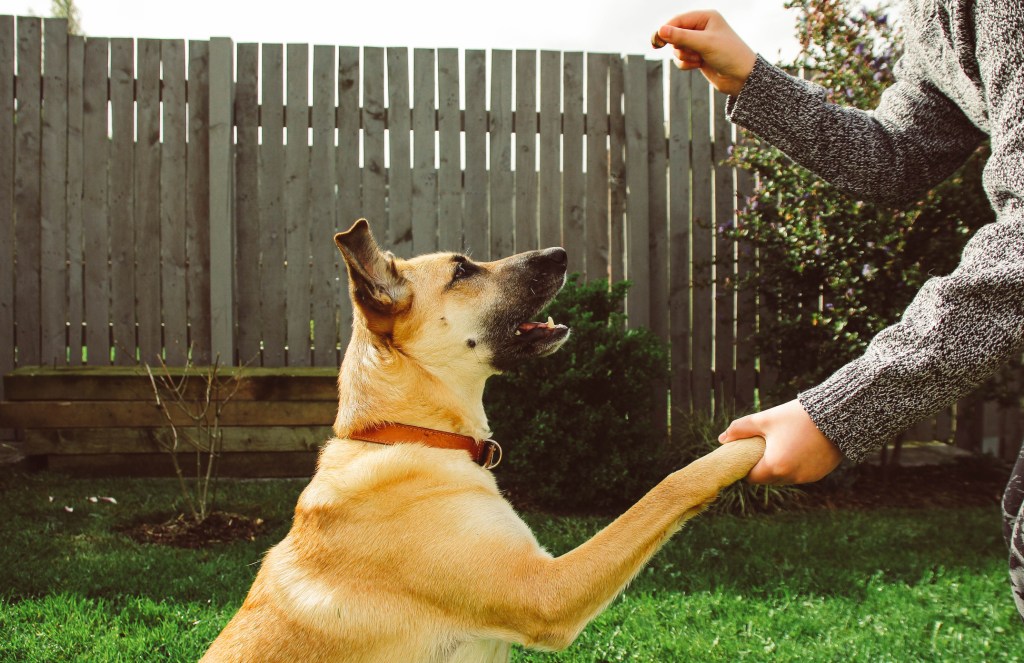
(Photo Credit: Kinga Krzeminska | Getty Images) Training is essential to keep your dog safe in various situations, whether it’s staying within the yard or maintaining control during emergencies. The mental exercise from training helps keep your dog sharp, burn off excess energy, and minimize undesirable behaviors. Consistency and patience are key; reward your dog when they get it right. As the adage says, you can always teach an old dog new tricks.
No matter what you’re trying to teach your dog, from housetraining to “heel,” there are a few basic guidelines that can help make the process easier. Be sure to check out our feature on several of the most popular dog training methods. We also have articles on the basics of leash training for your pups. If you’ve got the basics covered and are looking for a few extra tricks, check out 10 Fun, Impressive Tricks You Can Teach Any Dog.
Related:
-
Intelligence
Dogs exhibit a remarkable spectrum of intelligence, encompassing a wide array of cognitive abilities and problem-solving skills. From the astute problem-solving abilities of breeds like Border Collies to the keen observational skills of German Shepherds, canine intelligence manifests in various forms. Some dogs excel in tasks requiring social intelligence, such as understanding human emotions and cues. Other may showcase exceptional learning capacity in their ability to master complex commands and tasks. Additionally, certain breeds demonstrate remarkable memory retention and the ability to adapt to new situations swiftly. However, it’s essential to recognize that intelligence in dogs is diverse and multifaceted. Intelligence is influenced not only by genetics, but also by individual experiences and environmental factors.
Dogs bred for tasks requiring decision-making, intelligence, and focus, such as herding livestock, require mental stimulation akin to how dogs bred for endurance need physical exercise. Lacking such mental engagement, they may resort to activities like digging or chewing to occupy themselves. It’s worth noting that while intelligence is valued, it doesn’t always correlate with trainability, especially in breeds bred for independent thinking. Hello, Livestock Guardians! Incorporating obedience training, interactive toys, and engaging activities like dog sports or careers such as agility and search and rescue can provide the mental challenge these dogs crave.
Mental stimulation for your dog
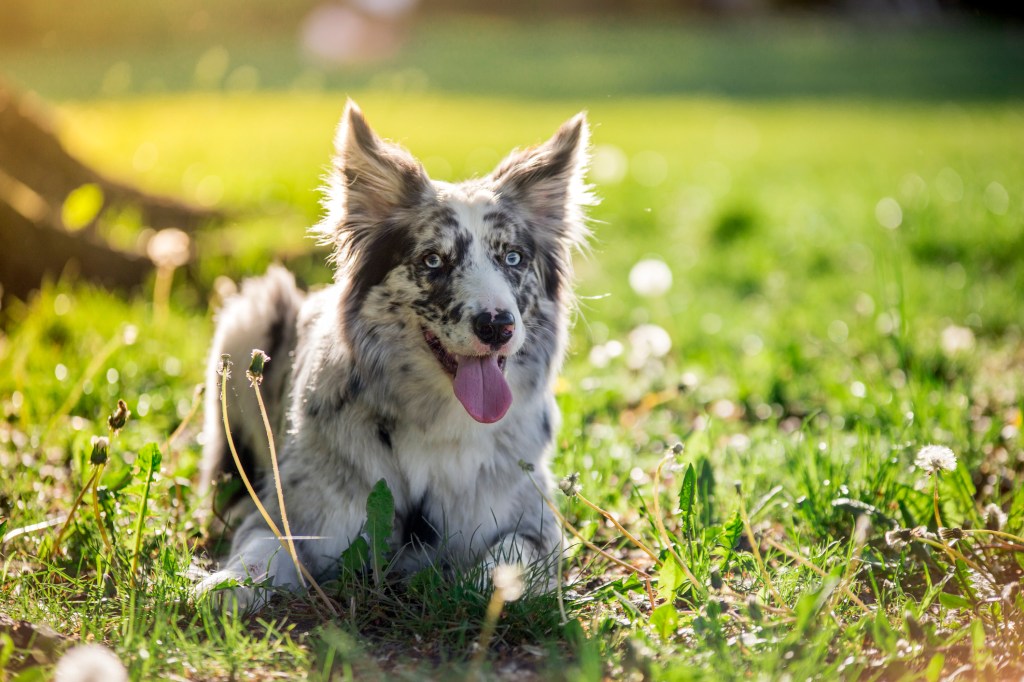
(Photo Credit: Anita Kot | Getty Images) Keeping your dog mentally stimulated is crucial for their well-being. One way to do this is through interactive play and toys. Treat-dispensing toys or puzzles that require problem-solving can keep your dog entertained and mentally engaged. Regularly rotating toys can also prevent boredom. Additionally, incorporating training sessions into your daily routine provides mental stimulation while strengthening your bond with your dog. Teaching new tricks or practicing obedience commands challenges their mind and keeps them sharp.
Another way to stimulate your dog mentally is through enrichment activities. This includes activities that engage their senses, such as hide-and-seek games using treats or scent trails. Taking your dog on different walking routes or exploring new environments introduces novelty and mental stimulation. Additionally, providing opportunities for social interaction with other dogs through playdates or visits to dog parks can stimulate their minds through socialization. Regularly changing up their environment and offering new experiences helps prevent monotony and keeps your dog mentally sharp and happy.
-
Tendency To Bark Or Howl
Some breeds sound off more often than others. When choosing a breed, think about how often the dog vocalizes. Learn more about breeds with a tendency to bark or howl.
If you’re considering a hound, would you find their trademark howls musical or maddening? If you’re considering a watchdog, will a city full of suspicious “strangers” put your pup on permanent alert? Will the local wildlife literally drive your dog wild? Do you live in housing with noise restrictions? Do you have neighbors nearby who may not be thrilled about the booming barks? Then you may wish to choose a quieter dog.
Effective ways to deal with a vocal dog
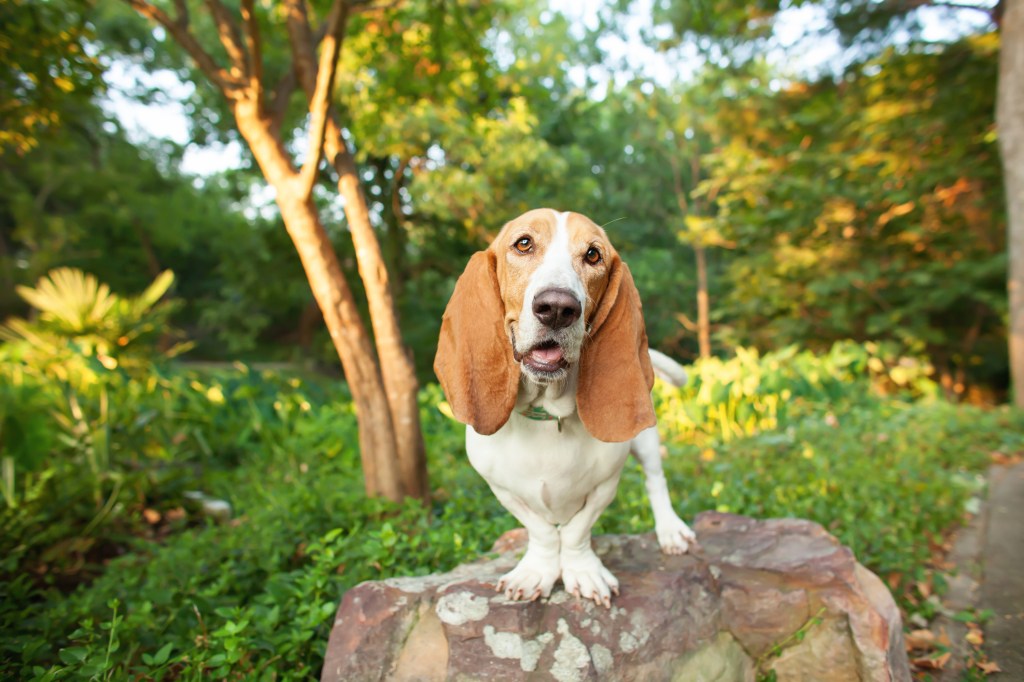
(Photo Credit: Mica Ringo | Getty Images) Training a dog with a tendency to bark or howl excessively requires patience, consistency, and positive reinforcement techniques. Begin by identifying the triggers that prompt your dog to bark, whether it’s the doorbell, passing cars, or other animals. Once you understand the underlying causes, work on desensitizing your dog to these stimuli through gradual exposure and counterconditioning. For example, if your dog barks at the doorbell, practice ringing the bell repeatedly at a low volume while rewarding calm behavior with treats or praise. Gradually increase the intensity of the stimulus while continuing to reward quiet responses, reinforcing the idea that remaining quiet brings positive rewards.
In addition to desensitization exercises, teach your dog an alternative behavior to replace barking, such as “quiet” or “speak.” Use these commands in training sessions to encourage your dog to bark on cue and then stop when prompted. Consistency is crucial, so ensure everyone in the household is on board with the training plan and reinforces the desired behavior consistently. Finally, provide mental and physical stimulation through regular exercise and interactive toys to help alleviate boredom and reduce the likelihood of excessive barking.
-
Wanderlust Potential
Dogs possess a natural inclination for exploration and adventure, often displaying wanderlust tendencies that stem from their ancestral instincts. With their keen sense of smell and curiosity, dogs are drawn to new scents, sights, and experiences. As a result, they may be inherently prone to wander off if given the opportunity. This wanderlust potential varies across breeds, with some exhibiting stronger instincts for exploration than others. Breeds such as the Siberian Husky, Beagle, and Australian Shepherd are known for their independent spirits and high energy levels. They may be more likely to wander off in search of excitement or stimulation. However, even breeds typically considered more docile may still succumb to wanderlust if not properly trained or supervised.
Safety tips for dogs with wanderlust potential
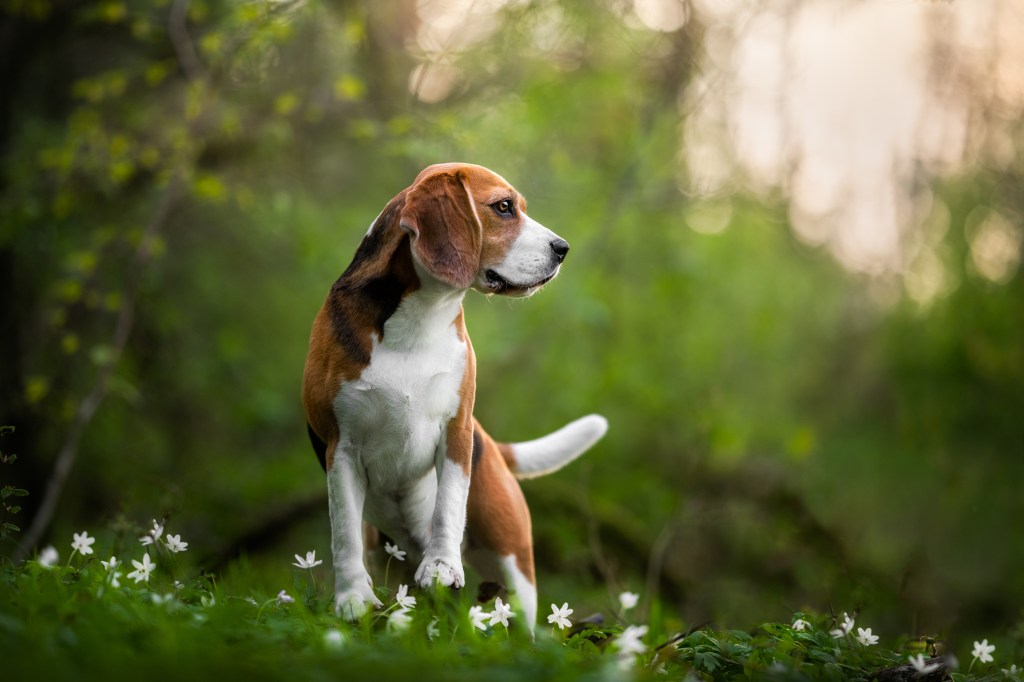
(Photo Credit: IzaLysonArts / 500px | Getty Images) To mitigate the risk of dogs wandering away, responsible pet ownership involves implementing preventative measures and training techniques. Providing adequate physical and mental stimulation through regular exercise, interactive play, and enrichment activities can help satisfy a dog’s innate desire for exploration and reduce the likelihood of wandering behavior. Having a general awareness of the “escape artist” tendencies in certain breeds can help you in ensuring the safety of your pup. Additionally, training commands such as recall and leash manners are essential for establishing boundaries and ensuring that dogs remain under control when outdoors. Investing in secure fencing for outdoor spaces and using identification tags or microchips can also provide added security and peace of mind in case of accidental escapes.
Exercise needs
-
High Energy Level
Energetic dogs, bred for specific tasks such as retrieving for hunters or herding livestock, are always ready for action and have enough stamina to work a full day. Additionally, active dogs with high energy levels necessitate a significant amount of physical and mental activity. These dogs enjoy jumping, playing, and discovering new sights and smells. Owners of high-energy breeds must provide outlets for their dogs’ physical and mental needs to keep them healthy and happy.
Low-energy dogs, on the other hand, are the canine equivalent of a couch potato, content to spend their days sleeping. When choosing a dog breed, you should consider your activity level and the energy level of your potential companion. Determine whether you would find certain dogs’ lively and energetic personalities invigorating or potentially overwhelming. Understanding a breed’s energy requirements is critical for ensuring a harmonious match between the dog’s needs and the owner’s preferences, resulting in a satisfying and balanced companionship.
Exercise needs for your active dog
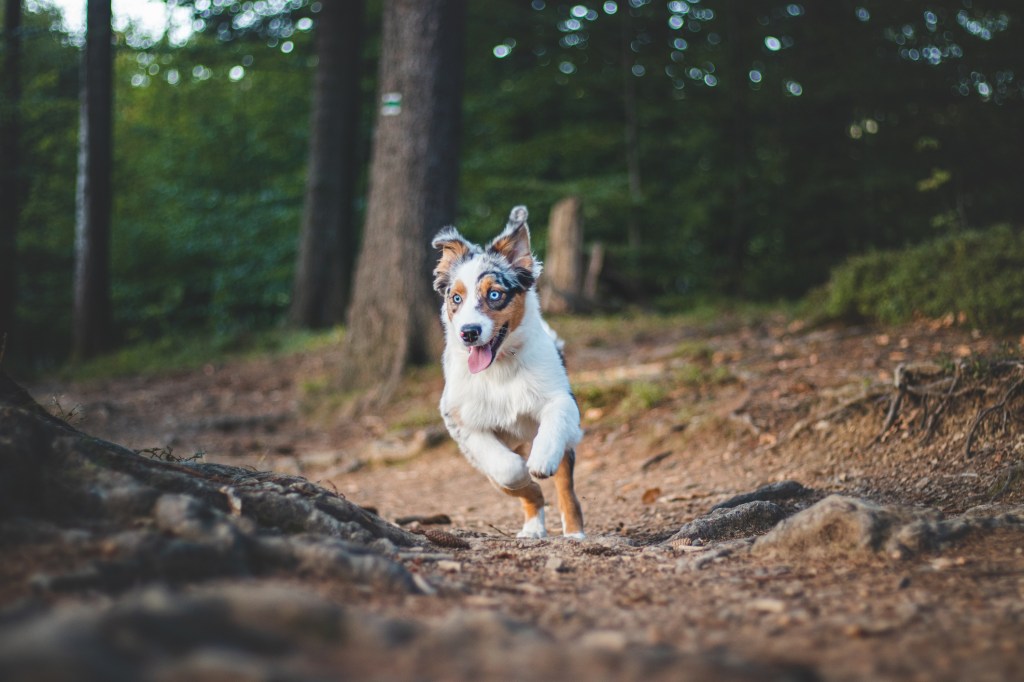
(Photo Credit: VSFP | Getty Images) Exercise requirements for high-energy dogs can vary even within the same breed. It’s also important to note that age doesn’t exempt senior dogs from exercise; they simply require shorter walks compared to their younger years. For energetic dogs, a leashed stroll around the block won’t be enough. The goal is to ensure that your dog is sufficiently tired and content by the time the exercise session concludes.
To meet the exercise needs of active breeds, it’s recommended to provide at least 30 minutes of vigorous aerobic exercise most days. This applies not only to larger breeds but also to smaller ones. Some toy breeds are prone to obesity and may need more activity than one might assume. Safety is paramount, so during extreme weather conditions, it’s advisable to stay indoors and engage your dog’s mind through activities like trick training, interactive play with toys, or running up and down stairs together. A well-rounded exercise routine involves activities that challenge both mental and physical muscles, such as exploring new hiking trails. Check out our guide on the Top 10 Ways to Exercise With Your Dog.
RELATED:
-
Intensity
A dog with high intensity exudes boundless energy and enthusiasm in everything they do, whether it’s pulling on the leash, tackling obstacles with gusto, or devouring meals with voracious appetite. While their exuberance can be endearing, it also necessitates consistent training to instill good manners. However, not everyone will appreciate their high energy levels. Some high intensity dogs may not pair well to households with young children or individuals who are elderly or frail, as their exuberance could inadvertently pose a risk.
In contrast, a low-intensity dog approaches life with a more relaxed and subdued demeanor. These dogs typically exhibit a calmer disposition, preferring leisurely strolls and gentle interactions over exuberant displays of energy. Their tranquil nature often makes them ideal companions for those seeking a more laid-back canine companion. This may be particularly true in homes where a quieter atmosphere is preferred.
Exercise and training for high-intensity dogs
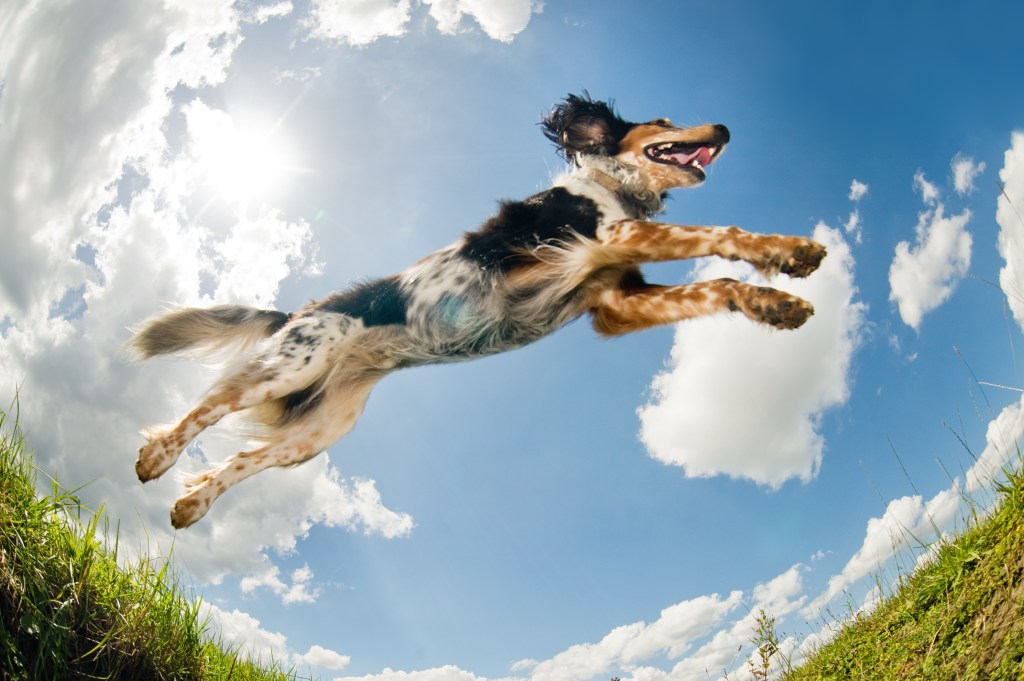
(Photo Credit: shevvers | Getty Images) Training and exercise are crucial for dogs with high-intensity personalities to manage their energy effectively. Consistent training using positive reinforcement techniques helps instill good manners and impulse control. Engaging them in mentally stimulating activities, alongside regular physical exercise like agility or fetch, is essential to prevent boredom-driven behaviors and promote overall well-being. Variety in their exercise routine, such as exploring new trails or participating in dog sports, ensures both physical and mental stimulation for a balanced and fulfilling life.
-
Exercise Needs
Different dog breeds have varying exercise needs, and understanding these requirements is crucial for ensuring a happy and healthy canine companion. Some breeds are content with a leisurely evening stroll around the block, while others demand daily, vigorous exercise routines, particularly those originally bred for physically demanding tasks like herding or hunting. Without sufficient physical activity, these high-energy breeds may face issues such as weight gain and express their pent-up energy in undesirable behaviors like excessive barking, chewing, and digging.
We often think of exercise only as a health issue, but it has significant day-to-day effects on a dog’s behavior as well. Dogs — particularly puppies and young dogs — have a lot of energy, and if they don’t get the chance to burn it off, destructive behavior is often the result. If you’re annoyed at your dog’s digging, have headaches from barking, and need to replace pillows shredded into expensive fluff, your dog is probably not getting enough exercise.
How much exercise does my dog need?

(Photo Credit: Image by Chris Winsor | Getty Images) Generally speaking, a leashed walk around the block isn’t going to cut it. Most dogs need 30 to 60 minutes of physical activity a day. Your canine pal needs enough that they’re slowed down by the time you stop.
Some general guidelines for getting your dog enough exercise:
- Active breeds need a minimum of 30 minutes of hard aerobic exercise most days of the week, preferably daily.
- Not all toy or small breeds get enough exercise inside the house, contrary to popular belief. Pugs, for example, are prone to obesity and need much more activity than they usually get.
- It’s not safe to go out in extremely hot or cold weather. During such periods, stay inside and teach tricks to engage your dog’s mind, throw toys, or run up and down the stairs together.
- Good exercise uses both mental and physical muscles. Exploring a new hiking trail, for example, engages your dog’s mind as well as their body.
- Live by the philosophy that a tired dog is a good dog.
-
Potential For Playfulness
Understanding your dog’s temperament is crucial when considering their exercise and play needs. Some dogs have a high potential for playfulness, constantly seeking out games and activities to engage in. These playful pups can be endearing, but it’s essential to consider how much time and energy you have to dedicate to play each day. Think about whether you’re prepared for multiple rounds of fetch or tag and if you have other family members, kids, or even other dogs who can serve as playmates for your furry friend.
On the other hand, some dogs are more serious by nature. While they may still enjoy playtime, it might not be as frequent or vigorous as with their more playful counterparts. Understanding your dog’s individual temperament helps you tailor their exercise routine to suit their needs and preferences. It’s about finding the right balance between providing enough mental and physical stimulation without overwhelming them or neglecting their need for relaxation and downtime.
Make the most of playtime
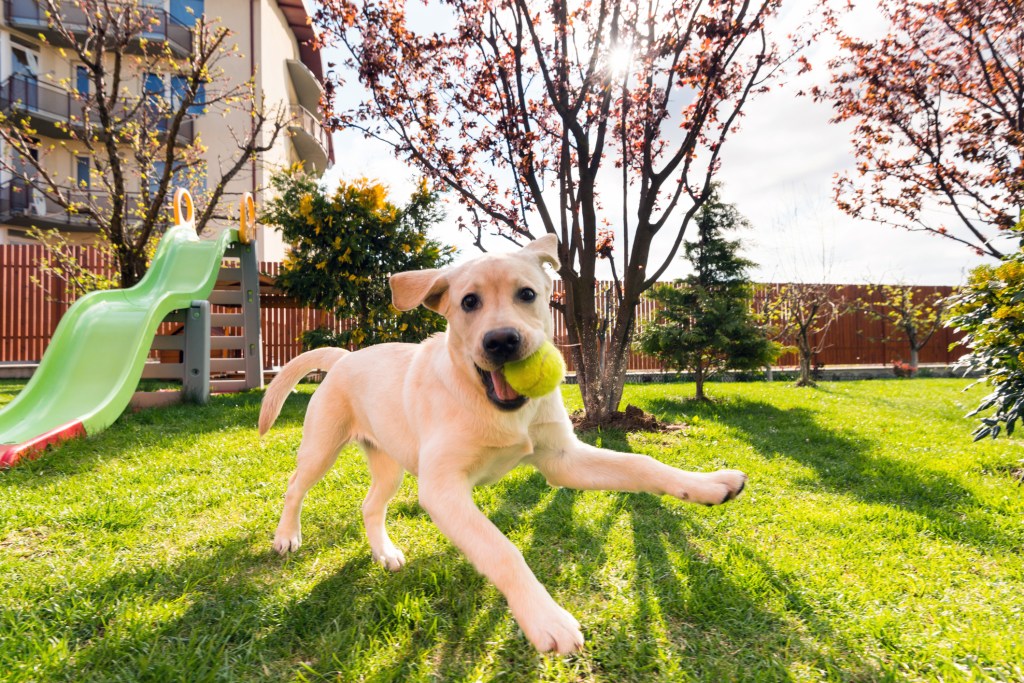
(Photo Credit: Stefan Cioata | Getty Images) Playing with our pups is good for us. Seriously, science says so! To make the most of spending time with breeds with a high potential for playfulness, consider incorporating a variety of interactive games and toys to keep them mentally stimulated and physically active. Engage in activities such as fetch, tug-of-war, or hide-and-seek, which tap into their natural instincts and provide both mental and physical exercise. Use positive reinforcement, such as treats and praise, to encourage good behavior and reinforce the bond between you. Remember to be patient and flexible, allowing your dog to lead the play session and adapt to their preferences. Finally, ensure a safe environment by removing any potential hazards and supervising closely, especially when introducing new toys or activities.
Anatolian Pyrenees Overview
Anatolian Pyrenees Highlights
Ancient lineage: The Anatolian Pyrenees boasts a rich heritage as a crossbreed between the ancient Anatolian Shepherd Dog and the Great Pyrenees, combining the historical significance of two distinct guardian breeds.
Powerful protector: Inheriting the formidable protective instincts of the Anatolian Shepherd, the Anatolian Pyrenees excels as a loyal and effective guardian, showcasing a natural inclination to protect its family and territory.
Balanced temperament: The breed exhibits a well-balanced temperament, blending the calm and gentle nature inherited from the Great Pyrenees with the assertiveness of the Anatolian Shepherd, resulting in a devoted and approachable companion.
Impressive stature: Physically, the Anatolian Pyrenees stands out with an imposing size, featuring a robust build and a striking double coat often adorned with a mix of white and tan colors, enhancing its majestic appearance.
Versatile adaptability: Well-suited for various environments, the Anatolian Pyrenees adapts seamlessly to both rural and suburban settings, making it a versatile choice for families seeking a loyal and adaptable companion with a unique blend of protective instincts and gentle companionship.
Anatolian Pyrenees History
The Anatolian Pyrenees is a mixed breed, so they don’t have history as their own breed. Both parent breeds, however, are well known and loved. The Anatolian Shepherd is named for their homeland of Anatolia in the central part of Turkey, where they are featured on a national postage stamp. It is believed that the working ancestors of the breed date back over 6,000 years. Despite their large size, their lanky legs assist the breed in swiftly defending the flock from predators. Anatolian Shepherds got their most well-received introduction in the U.S. in the 1970s, although Turkish government officials had previously given Anatolians to the U.S. Department of Agriculture as a gift, for experimental work as guardians of flocks. In 1970, the Anatolian Shepherd Dog Club of America was formed by Robert Ballard, a U.S. naval officer who had become fascinated by the dogs while in Turkey, and who began to breed them once back in California. The breed entered the American Kennel Club Miscellaneous Class in 1996. It moved to the Working Group in August 1998.
The regal Great Pyrenees originated in the Pyrenees Mountains, which form a natural border between France and Spain. The breed is known by different names: Great Pyrenees in the United States and Canada, and the Pyrenean Mountain Dog in the United Kingdom and most of Europe. The breed’s ancestry is believed to date back ten to eleven thousand years to dogs who originated in Asia Minor – the breed is also believed to have arrived in the Pyrenees Mountains around approximately 3000 B.C. Throughout the 1800s, the breed gained popularity throughout England, Europe, and the United States. The two World Wars took a toll on all dog breeding; luckily, several Great Pyrenees were imported to the United States before the European continent was effectively closed due to World War II. After the war, dedicated breeders began to restore the breed to its former glory, and today the Great Pyrenees is a much-loved and admired dog both as a companion and a working dog.
Anatolian Pyrenees Size
The Anatolian Pyrenees is a large, stocky dog with an impressive build. The breed’s long, lanky legs make them seem even larger than life. Additionally, the thick fur of the breed can make them appear truly massive. This breed is usually found in variations of white with various markings, like brown or black spots.
Anatolian Pyrenees Personality
The Anatolian Pyrenees is often good natured and loving with those they know well, but they also can be overprotective or easily startled. It’s crucial to work on socialization from a young age for this breed; reactivity to people or other dogs will limit them, and they can be quick to perceive others as potential threats. Training them consistently when young will ultimately improve their quality of life (and yours) as an adult. It’s important to work on positive reinforcement training consistently and firmly, and to bring in a professional trainer if you feel that you’re starting to see behavioral issues.
Anatolian Pyrenees Health
While Anatolian Pyrenees originating from responsible breeders are often healthy, there are some genetic predispositions towards health issues to be aware of with this crossbreed. Many of these issues spring up later on in these dogs’ lives.
Hip Dysplasia: Hip dysplasia is a genetic condition where the hip joint doesn’t fit into the hip socket properly, leading to instability and wear and tear of the joint over time. It can result in arthritis and pain, impacting a dog’s mobility.
Elbow Dysplasia: Elbow dysplasia is a developmental abnormality affecting the elbow joint, often caused by a combination of genetic and environmental factors. It can lead to arthritis and lameness, causing discomfort and reduced functionality in the affected limb.
Entropion: Entropion is an eyelid disorder where the eyelid rolls inward, causing the eyelashes to irritate the cornea. This can result in discomfort, excessive tearing, and potential damage to the eye’s surface.
Bloat: Gastric dilatation-volvulus (GDV), commonly known as bloat, is a life-threatening condition where a dog’s stomach fills with gas and twists on itself. This can lead to a compromised blood supply to vital organs, and it requires immediate veterinary attention.
Cataracts: Cataracts are the clouding of the eye’s lens, causing vision impairment. In dogs, cataracts can be hereditary or develop due to age, diabetes, or other underlying health issues.
Anesthesia Sensitivity: Some dogs, due to genetic factors, may exhibit sensitivity to anesthesia. This can affect how they metabolize anesthetic drugs and may require special considerations and monitoring during surgical procedures. It’s important for veterinarians to be aware of this sensitivity to ensure safe anesthesia administration.
Anatolian Pyrenees Care
The Anatolian Pyrenees, like most breeds, needs daily exercise to feel content. Ideally, this breed should receive at least a 45 minute to hour hour-long walk daily; they may enjoy fast-paced exercise like jogging. Additionally, they enjoy indoor or outdoor play like fetch or tug-of-war. This breed can excel at sports like dog agility for those who have the time to commit to training them. This breed shouldn’t be kept as an apartment dog. Their size and energy make them unsuitable, even with plenty of consistent outdoor play.
Anatolian Pyrenees Feeding
The Anatolian Pyrenees should be fed a diet consistent with that of a large breed with high energy levels. Food-motivated tasks, like snuffle mats or filled toys, can help stimulate this breed’s active mind; they are often motivated by harder puzzle toys as well. Slow feeders may also be a good way to feed this pup, as they are prone to bloat. Foraging-type activities, like scattering treats throughout the backyard, are quick and easy ways to briefly get your dog’s brain working. However, this breed is prone to struggling with obesity; try to use low-calorie treats like sweet potatoes if frequently offering rewards. Because all dogs are unique in their diet requirements, it’s best to consult your veterinarian to determine the best food to feed your pup.
Anatolian Pyrenees Coat Color And Grooming
The Anatolian Pyrenees’s coat requires heavy maintenance. With the thick coat contributed by the Great Pyrenees, this dog should ideally be brushed at least three times weekly. Consider regular visits with a professional groomer to trim and shape the coat. Heavy de-shedding tools, like the Furminator, can be great for this breed. As with all dog breeds, be sure to check on nail maintenance.
Anatolian Pyrenees Children And Other Pets
There are some considerations to be made before choosing to add the Anatolian Pyrenees to your family. While loyal to family members, this pup is often happiest as the sole pet in the home. This breed is typically respectful and gentle with children. Small children and puppies may not coexist well, as even the most well-intentioned large breed puppy has a bit of a “bull in a china shop” effect. However, most adult dogs learn awareness of their size and strength. Other dogs typically get along just fine with proper introductions. Due to the breed’s protective and gentle nature, other pets such as cats typically aren’t chased or harassed. This breed is very devoted to their people, but sometimes wary of strangers.
Anatolian Pyrenees Rescue Groups
There are no specific rescues for the Anatolian Pyrenees as they are a mixed breed. However, you can often find similar mixes of the Anatolian Shepherd or Great Pyrenees up for adoption. Additionally, similar breeds like the English Sheepdog or Border Collie may be more widely available in local shelters. Whatever the circumstances, try opening your home to a rescue pup. With millions waiting for fur-ever homes, there’s no reason to opt to shop.
Anatolian Pyrenees Breed Organizations
Finding a reputable dog breeder is one of the most important decisions you will make when bringing a new dog into your life. Reputable breeders are committed to breeding healthy, well-socialized puppies that will make great companions. They will screen their breeding stock for health problems, socialize their puppies from a young age, and provide you with lifetime support.
On the other hand, backyard breeders are more interested in making a profit than in producing healthy, well-adjusted dogs. They may not screen their breeding stock for health problems, and they may not socialize their puppies properly. As a result, puppies from backyard breeders are more likely to have health problems and behavioral issues.





